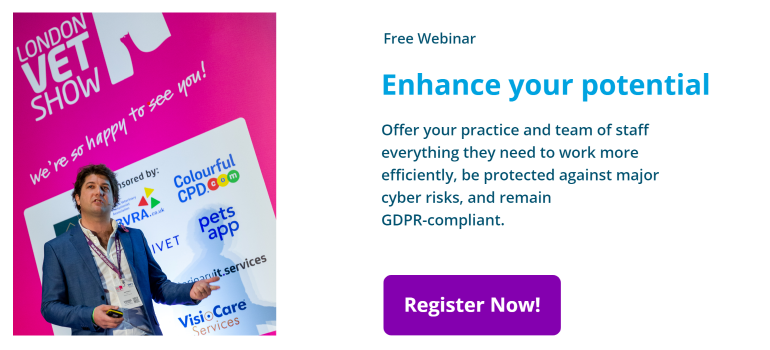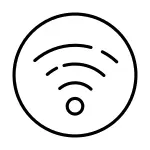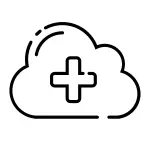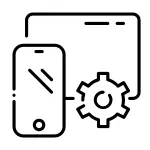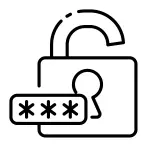Subscribe via your favourite podcast platform: Spotify | Apple Podcasts | Google Podcasts | Anchor | Breaker | Pocket Casts | RadioPublic
In this week’s episode
- Did your practice adopt a telemedicine solution during the Coronovirus lockdowns? Perhaps you’re wondering how it fits in to your everyday use now that restrictions are easing and clients are allowed back into the practice? If either of these ring true then this episode is for you…
- This week we welcome Founder and CEO of VetHelpDirect Susie Samuel to the Modern Veterinary Podcast to discuss digital innovation and the future of Teleconsults in post-Covid veterinary practice.
- Plus on the show this week, Jack introduces Microsoft Bookings – a fantastic tool for practice managers for managing appointment with suppliers and other team members, as well as basic shift management.
Show Notes
- Out every other week on your favourite podcast platform
- Presented by Jack Peploe: Veterinary IT Expert, Certified Ethical Hacker and dog Dad to the adorable Puffin.
- Jack introduced Microsoft Bookings and explained how practice managers can use it to manage appointments and shift management.
- Jack’s special guest was Founder and CEO at VetHelpDirect Susie Samuel who talked about the future of Teleconsults and other digital innovations now that clients are allowed back into the practice.
- Many thanks to Dr Katie Ford for recommending our book of the week “Man’s Search for Meaning” by Viktor Frankl”
- In our next episode Jack will be joined by Co-Founder and CEO of Flexee, Silvia Janska who will be talking to us about flexible working in the veterinary industry.
- Please send any questions, ideally in audio-form (or any other feedback) to jack@veterinaryit.services.
Transcription
Jack Peploe:
Coming up on modern veterinary practice.
Susie Samuel:
So I see it growing and becoming more and more important and really sort of less differentiated from bricks and… a normal traditional visit. It’s very natural in all other aspects of our life to switch between in-person interactions, messaging video. And that’s how I see the experience for veterinary clinics working.
Jack Peploe:
Welcome to modern veterinary practice. I’m your host and veterinary IT expert Jack Peploe. In this week’s episode, I’ll be talking to founder and CEO of Vet Health Direct Susie Samuel, about digital innovation and the future of tele consults in a post-COVID veterinary practice. I’ll also introduce you to Microsoft bookings and explain how practice managers can use it to manage appointments and even shift management for the team. This week, I want to introduce you to Microsoft bookings.
If you have a Microsoft 365 subscription, that bookings will be part of that. And I’d be willing to bet you probably aren’t taking advantage of it in your practice. Bookings is a simpler way to organize your schedule and manage appointments. In fact, we think it’s a fantastic tool for practice managers, for managing appointments with suppliers and other team members, as well as using it for basic shift management with staff. It integrates with your Microsoft 365 or office 365 calendar to help your suppliers and team members quickly find available times and avoid double booking.
All you have to do is send them a link, which means that you’ll spend less time emailing availability back and forth and more times getting on with important tasks. You can even put this link in your email signature, making it even simpler to book. There’s flexibility built into the app to fit a variety of scheduling needs across departments, individuals, and types of appointments. So you can create and manage multiple booking calendars each with their own unique setup. This means you can set up different calendars for your vets, nurses, receptionists, etc. You can even create one for practice managers or partners if you share the roles with others and you can easily schedule meetings or group events without having to add individuals. Plus suppliers and your team could even book in with your counterpart if you’re not around. Not only can you access this via the web, you could even download the bookings app easily and free.
And of course, with all Microsoft apps, it integrates perfectly with the rest of the 365 suite. So you can make your Microsoft bookings meetings virtual with Microsoft teams. Every appointment booked as an online meeting, creates a meeting link that everyone can join virtually from anywhere from Microsoft teams. It truly is a game changer and it’s something I use with my team, customers and suppliers daily. And it really does save me a huge amount of time. So check it out. It’s called Microsoft bookings.
Voiceover:
The interview.
Susie Samuel:
Hi, I’m Susie Samuel. I’m the founder of Vet Help Direct and the CEO. And I’m also the founder and non-executive director of Vets Digital, which is a veterinary specialist marketing agency. So I worked as a practicing vet for 13 years in a really wide variety of practices only to having a husband in the Navy. We have to keep on moving. So I’ve worked in mixed practice, equine practice, small animal practice. And I set up Vet Help Direct in 2006, and it’s grown and became my full-time job a few years ago.
Jack Peploe:
Hi, Susie. That’s quite a variety there. Welcome to the modern veterinary practice podcast. I’m obviously really excited to have you on the show today. How are you?
Susie Samuel: I’m good. Thank you. How are you?
Jack Peploe:
Yeah, very good. Thank you. So you’re here today to talk to us about the future of telemedicine post-COVID-19. Now I know that you are a staunch supporter of digital innovation in the veterinary sector. How did you first become interested in the subject?
Susie Samuel:
So I first became interested through developing the interactive symptom checker, and that was back in 2006. So it just became really obvious working in practice that all of my clients really wanted to do the best thing for their pets and to make the best decisions, but they just were finding that really, really difficult. So I’d get people that called me in the middle of the night over something that was non-urgent. And then I’d come in the following morning and find really sick pets who they should have called me during the night and they hadn’t.
So I wanted to help people with that choice. And it turns out that what I developed was actually what’s known as an expert system, although I didn’t realize that at the time, which is a very sort of basic form of AI. Then my experience in developing that platform, marketing it using digital marketing, has what got me into this world of technology and I’m really passionate believer that it can help reduce barriers and make it easier for clients to communicate with their vet and that when it’s easier for clients to communicate with their vets, that has all kinds of knock-on benefits and ultimately results in better animal welfare.
Jack Peploe:
I couldn’t agree more. So in the past, we found that as a sector and you may disagree with me on this one, but veterinary have been a bit slow on the uptake when it comes to embracing innovation in day-to-day practice. Now having been an advocate for digital and innovation for quite some time, how would you say this has changed in the past year to two years?
Susie Samuel:
Yeah, I mean, a lot of people say that that’s a slow to adopt innovation. And I think that’s maybe a sort of a very sort of summary of a situation because actually what we found is that there’s some vets that are really forward thinking and fast to adopt technology. And I suppose it’s a natural bias that we end up spending a lot more time with these veterinary practices. They really, since 2006, we’ve been sort of immersed in the kind of really forward thinking and innovative vet practices are very quick to embrace technology and really are held back by the lack of available technology rather than their mindset. But I am aware that there are other practices that are maybe a little bit slower to adopt the technology. But then we’ve also got to be mindful of the massive challenge that exists for vets.
They’ve got to… Most of them actually practice as vets day in, day out, looking after their clients, staying up to date with clinical knowledge, surgical knowledge. It’s a really, really challenging job. A lot of them are running businesses alongside that. So they’re trying to do CPD to learn how to be business people. And then at the same time, they need to keep up with technology and with digital. And that’s a real challenge. And actually I’ve been massively impressed at vets over COVID how agile they’ve been and how flexible and how they’ve really tried to adapt fast to provide the best services for their clients. And as I say, I think they are a lot of the ones in, as I say, I think there may be a bias in the practices that I deal with, but that they are held back really by what’s available to them at the moment.
Jack Peploe:
No no no, I couldn’t agree more. I mean, it’s been an extremely difficult time for everyone, but especially within the veterinary world and I’ve seen this firsthand sort of working night and day, and like you say, having to adapt as much as possible and in some cases be put into circumstances where they don’t really want to be where everyone else almost had to step away from their work and things have been cut down in some ways. In the veterinary world, it’s sort of got more intense, which you have to take your hat off to everyone within the veterinary sector. Now sort of on that point around the veterinary practices where you have noticed they sort of massively embraced the technology, what would be your advice around getting the most from say telemedicine platforms?
Susie Samuel:
Well it’s interesting. So, I was just thinking as you were just speaking then Jack, that actually what you’re doing is amazing. And I think that the veterinary industry is being waiting for a service like yours for a very long time. And I think that one of the hallmarks of the practices that we work with a forward thinking is that they’re prepared to outsource things to experts and to be aware that they don’t have time to master it all themselves. And although they couldn’t, they’ve all got the intellectual ability to get around all of this stuff, but actually that’s not the most efficient way to do it. And actually outsourcing to experts is a really fantastic way forwards.
And so I think what you’re doing has got potentially huge benefits. I think in terms of telemedicine, we saw people sort of just adopting, understanding that the best way that they needed to adapt to offer vets practice is to be able to communicate with them in-
Jack Peploe:
Yeah.
Susie Samuel:
The clients be able to communicate with the vet practice and the way that they felt most comfortable and safest during COVID. I’ve got feeling I haven’t quite answered your question there.
Jack Peploe:
No, no, no, no, that’s fine. No, to be fair, I’m in agreement. I think that outsourcing is a really, really key component. I mean, we can’t be all experts with everything. I mean, I’d certainly I’d never want to put my hand to veterinary medicine, I think I’d really struggle there. I’ll stick to what I’m good at. So I think that definitely has a key part. And I think that the other thing that we’ve noticed, especially, and I’m sure it’s very much the case for you guys is how the technology is adopted.
I think you have to sort of go in with that clear mindset of, right, “This is what we want to achieve, and this is what we’re trying to tackle,” and having a clear plan of how you’re going to get that technology in there because where we’ve noticed particular veterinary practices struggle with the technology and almost not adopt it and not embrace it fully is been where they haven’t sort of had that clear plan, had that plan to sort of train and educate their users so that they can get the most from the technology rather than seeing it the same as everything else where it’s almost like a hindrance. Which you say that’s a fair statement?
Susie Samuel:
Yeah. A hundred percent. And the practices, even when they were adopting things during COVID the ones that did it most successfully as you say, were the ones that had that plan, had the training for their staff and got them on board. I think there’s two other things which are most to the technology themselves. And the first is having technology that integrates with the practice management system and seems to be fundamental to the success and its adoption. If people have got to sort of transcribe between two different systems and they’ve got to sort of be looking up things on one system or it’s using another system, it does put barriers in the way of its use. And although their training can help to some extent expecting veterinary teams to change their workflows significantly just to adopt a new technology is a big ask. So it’s easier if new technologies work within existing workflows and technologies are sort of obvious to use and intuitive, or then to some extent of training is less important and or less onerous should I say.
Jack Peploe:
Yeah, no. Couldn’t agree more. And I think I tell you, I could talk for hours about the PMS component as that is one of my major frustrations, as I’m sure it is yours. As there are some obviously PMS platforms that are absolutely brilliant when it comes to integrations, but then there are some others that make it quite difficult and make it very difficult for external technologies to be able to come in and enhance the veterinary world, which is what I’ve noticed. But yeah, I’ll save that for another day. So obviously I’m in full support of the technology. Crazy for me not to be considering my technology background. I could see that there are obviously some huge benefits that telemedicine can provide such as allowing clients greater access to their vets even if they may be in say geographically remote areas. It’s great for triaging as the client can quickly and easily find out whether a vet visit is necessary, which in turn, then can reduce the stress for the animals.
It ultimately would avoid any unnecessary vet visits. One of the serious benefits that I’ve seen is the speed of access to the vet, obviously because it’s increased a big caveat here if the technology is again, adopted and embraced correctly. Which then provides a greater client and vet experience. Which, we’ve all kind of become accustomed to, especially with the whole COVID situation. We’ve all become more accustomed to these types of technologies based on the situation. Now for anyone that’s not properly utilizing telemedicine within practice, are there any other benefits to the technology that you would say?
Susie Samuel:
Oh, well I think you’ve done a really comprehensive less that Jack and I fully agree with all of those. The one thing that I would say is that it just reduces barriers. And I think you’ve sort of referred to that in some of the answers that you gave with triage. But rather than necessarily always triaged being about telling somebody that they don’t need to come in. Sometimes it’s about a very low effort step and a low energy step for the clients to telling them, do need to come in and forming that relationship with them to explain why they actually need to bring that pet into the vets. We were working on our telemedicine platform for a year before COVID broke out and we were very much looking at telemedicine being maybe three out of 10 visits in a particular journey and that a client tick with the vet.
So you might have telemedicine in the first instance where somebody is not really sure if they need to come into the vets. Then you might then need to obviously bring the pets to the vets and that’s going to be just such an incredibly central part of the veterinary experience for all of the sort of foreseeable future for treatment, diagnostics, surgery or that type of thing. But then it might be that one of the followups can be via video. Then it might be that as a repeat prescription check is being organized that that can be done over telemedicine as well. And there are enormous and very substantial benefits to clients in doing that. We did a survey of 998 pet owners just prior to COVID talking, asking them about the problems that they faced physically getting their pet to the vet. And it was just really eye-opening actually to see things from that perspective. I think too often as a vet that you just see the client in front of you and you don’t understand the journey that they’ve been on to get to you.
But the pattern is in our survey, we’re talking about struggling with small children to come to the vets, getting stressed about trying to find a parking space, or then a lot of them very, very empathizing so sort of closely with their pets and understanding that their pet was stressed as it came to the vet and that in turn made them very stressed. Just catching the pet can be problematic for some people and that can also affect any medicine appointments. And people talking about trouble climbing stairs, cat carriers hurting their arms. So there’s a whole range of accessibility issues and even saving clients, one visit to the vet out of three is an enormous benefit to them. And that’s very much the way that we think about telemedicine and reducing those barriers. Like I said earlier, it’s not just nicer for people. It’s actually better for the veterinary business and better for animal welfare.
So in the same survey that we did have 998 pet owners, I think it was 44% of people if they were worried about their pet, and they thought that their pet was it a little bit, they deemed the pet not to be suffering, that they would leave it for a few days to see if it gets better by itself. And as we all know as vets, often pet owners understanding whether the pet suffering or not is not the same as a vet. And so by getting any of that 44% through the door, having a video consult, because they’ll have a video consult, whether they come into the vets. You’ve got enormous potential there in terms of improving animal welfare and better for veterinary business as well.
Jack Peploe:
Yeah, no, absolutely. I couldn’t agree more. And sometimes it’s down to the fact that the client doesn’t even want to inconvenient to the vet because they see this whole hindrance could be caused and headache, like you say, of going to the practice and wasting in some cases, the veterinary professionals time, which people don’t want to do in most cases. And I suppose by having this quick and easy access to a vet, which is going to take up a lot less time, then they’re more inclined to sort of share information with the vet. So yeah, I couldn’t agree with that more. And there’s some factors which I’d never considered there, so that’s really interesting. Thank you very much. So, okay. So we’ve looked at the positive side. What about the downsides to the technology? I mean, such as missed business opportunities around product sales or even more significantly, are we increasing the risk to save the animal’s welfare?
Susie Samuel:
Well, I mean, those are all really good questions. And I think what we found during COVID was that the use of video changed quite dramatically from where we’d started and the journey that we’d been on with vets and pets is trying to understand how telemedicine could work. And as I said, that was very much part of the journey and a few steps on a journey. In COVID that’s, we’re forced to use telemedicine as an entire replacement, particularly in the first lockdown for in-person consults and then a lot of problems emerged. And I think nearly all of those problems were due to people having to use video consults when that really wasn’t the best thing, best way to have that conversation.
So particularly less experienced vets complaining about they find it very stressful not being able to examine the pet and worrying about missing something and examples and stories of things having been missed. There’s also problems with sort of organization and within the client’s house, the pet maybe not being there. And we made some really good strides around that by sort of helping the vets to communicate what was necessary for the video appointment prior to that and think we’ve pretty much sort of improved on that factor. And then there’s all the sort of like hilarious unforeseen things that happen where you actually seeing more of the clients’ anatomy than the pets anatomy.
Jack Peploe:
That’s fantastic. Oh dear. So that’s really… What we’d love to see is this tele revolution become a sustained part of veterinary medicine. But do you honestly think that telemedicine is here to stay, especially considering, I mean, one of the things that I’ve sort of read up on is, and correct me if I’ve understood this incorrectly, but the RCVS have extended the ability to temporarily remotely subscribe if there’s no suitable alternative. This surely means that they have every intention to revert, which cannot surely be a positive sign for telemedicine technology?
Susie Samuel:
Yeah. I mean, so I’m very much focused on vet clinics that practices using this technology with their own clients. And in that scenario, these prescription rules don’t have like a massive impact. That’s certainly not the biggest challenge or the biggest factor in whether telemedicine’s adopted or not, because you’ve already got that client, patient-client relationship. And as I say outside COVID when you sort of seeing them physically anyway, and this is just one sort of step on the journey. It’s less of an important deal. I think it’s far more important to the sort of providers who are not associated with the bricks and mortar vet clinic and I’m so blessed involved in that world. So yeah, I mean, although it will offer more opportunity, I guess to bricks and mortar practices as well, it’s not really what we’re focused on. I think we’re focused on… So we’ve got on our platform still sort of strong use of video consults people taking payments for video consults.
So almost generating a new revenue stream. And we’re very focused now on just making sure that that fits with the vet’s workflow as easily as possible. So that they’re not having to work between systems like I was saying earlier, and they’re not having to alter what they do to use our technology. Because for us, to be able to offer the consumer the best possible service, you have to make it as easy as possible for the vet staff to actually use it, and remember to fit it into their life, that sort of working day.
Jack Peploe:
No, that’s cool. So big question, where do you see the future of telemedicine within the veterinary sector?
Susie Samuel:
So I see growing and becoming more and more important and really sort of less differentiated from bricks and… yeah, a normal traditional visit. It’s very natural in all other aspects of our life to switch between in-person interactions, messaging, video and that’s how I see the experience for veterinary clinics working is clients being able to order products online, and have video consults online, book appointments online, view all of that vaccination records and pets details and keep those edited and up to date. And then also be able to message the vet in whatever way is most convenient for them, whether that’s WhatsApp or SMS. And for the vet clinic being able to deal with all of that. And then when they see the client, that’s not in a silo. So when the receptionist that’s a real life, in-person receptionist knows all of the digital interactions that have happened with that client up until that moment.
Jack Peploe:
No, no, absolutely. So do you have any advice for any practice owners or managers out there that are really looking to continue on embracing digital innovation into their practice?
Susie Samuel:
Yeah, I would say that staying focused on it is way key and I know how busy they all are at the moment and what’s stressful circumstances they all operating under. And really is a challenge enough just to get through the day, I think in most vet clinics at the moment. But I think putting a bit of time aside to look into this adoption of technology, making sure that we keep up with other sectors, our clients, the consumers in all the other industries. So their experience of digital has sort of gone up a whole notch with COVID and then much more technological than they were. And so we need to make sure that we don’t become a sort of archaic in the way that we, or to appear to be archaic in the way that we deal with clients compared to other industries.
Jack Peploe:
I couldn’t agree more. Susie, thank you so much for coming onto the show. Now, before we finish, can you tell me a bit more about Vet Help Direct and where people can find you?
Susie Samuel:
Yes, sure. So we, Vet Help Direct is… The central Vet Help Direct is a website. We have 5 million visitors a year. That’s our current run rate. And we are aiming to take people that are browsing the internet, hoping to find the answer to all their problems and engage them through our interactive symptom checker. Our information then helps them to understand that they need vet practice and then make it as easy as possible for them to choose the right vet practice for them and for their pets. So we know that there’s lots of difference between vet practices and it’s pretty hard for consumers to be able to understand what those differences are. And then it’s often quite hard to be able to interact with the clinics. So we’re just trying to reduce all those barriers and our software, the appointment booking and the client portal and the product ordering sits between the marketplace and our vet clinics so that it’s as easy as possible to get in touch with a new vet.
Jack Peploe:
That’s perfect. Susie thank you so much.
Susie Samuel:
Thank you Jack.
Katie Ford:
Recommended reading.
Jack Peploe:
Every week we asked veterinary professionals and experts to suggest a best business book for our listeners. This week’s recommendation is from the Imposter Buster, Dr. Katie Ford.
Katie Ford:
I had to think a little bit on this one because I am a prolific reader, but probably most influential book for me remains quite an old one. Actually it’s Man’s Search for Meaning by Viktor Frankl. So Viktor Frankl was an Austrian neurologist and he ended up being taken into the concentration camps in the Holocaust. And he studied people and realized that the people that managed to find happiness even there. And he was a psychologist as well. And he’d written a whole thesis before he went in, which was confiscated from him by the Nazis. And he then swore I’m going to rewrite it, but had a lot of learnings there. And there’s a few quotes from it that I find really, really empowering. And I definitely say, check out is an all book, but it’s still stands so true. And the first one, and I know these off by heart is just so powerful, but he says between stimulus and response, there’s a space. And that space is our power to choose our response. In our response lies our growth and our freedom.
And another one, which really resonates with me having gone through a few years, a really dark time, which I just touched on there, but obviously, I did get appropriate help and came through it is, “What is to give light, must endure burning.” And I just look at that and think, you know what? That’s so right in terms of what I went through all of that and that is why I feel so empowered to be like, “You know what? There’s another side to this. And that’s why I’m so passionate.”
And then the final one, which again, and it just sums up when you look at what’s happened and what he went through in this book is, “Everything can be taken from a man but one thing, the last of human freedoms to choose our own attitude in any given set of circumstances and choose our own way.” And so definitely recommend that book. It’s not a long book, but it’s just a fascinating one. And even though it’s 50, 60, 70 years old now it’s still applicable now. It is a game changer
Jack Peploe:
Coming up next week, we welcome co-founder and CEO of Flexee, Silvia Janska. She’ll be talking to us about flexible working in the veterinary industry.
Silvia Janska:
The employers were very open-minded about this. But they just didn’t know how to implement it. And, everybody needs flexible working to some extent. But there needs to be sort of a two-way flexibility, sort of a give and take approach between the employer and employee to make it work.
Jack Peploe:
That’s it for this episode, all links and recommendations we talked about are in the show notes. Don’t forget to subscribe and share the podcast if you found it useful. In the meantime, thanks for listening and see you next time.
